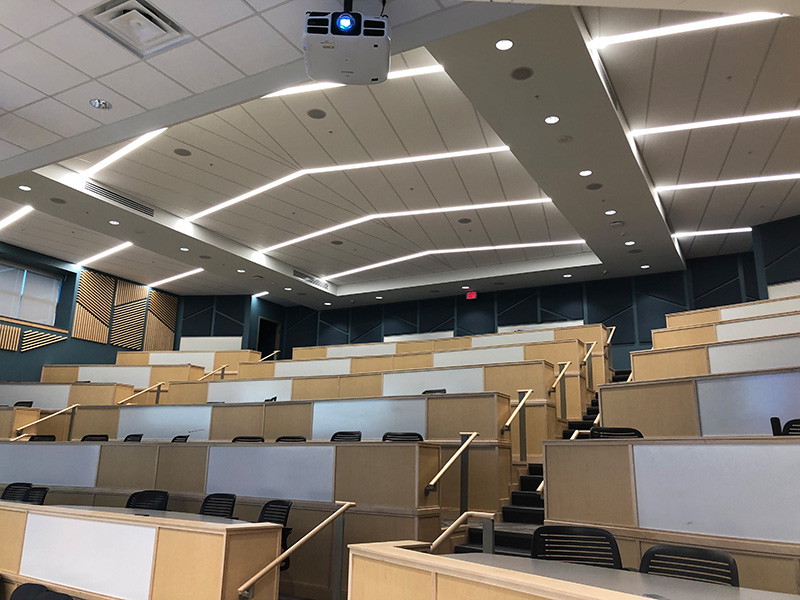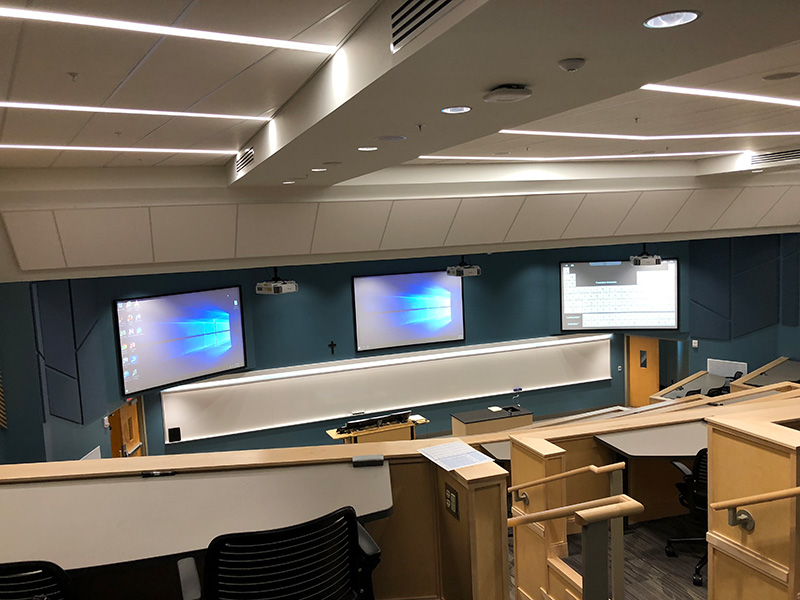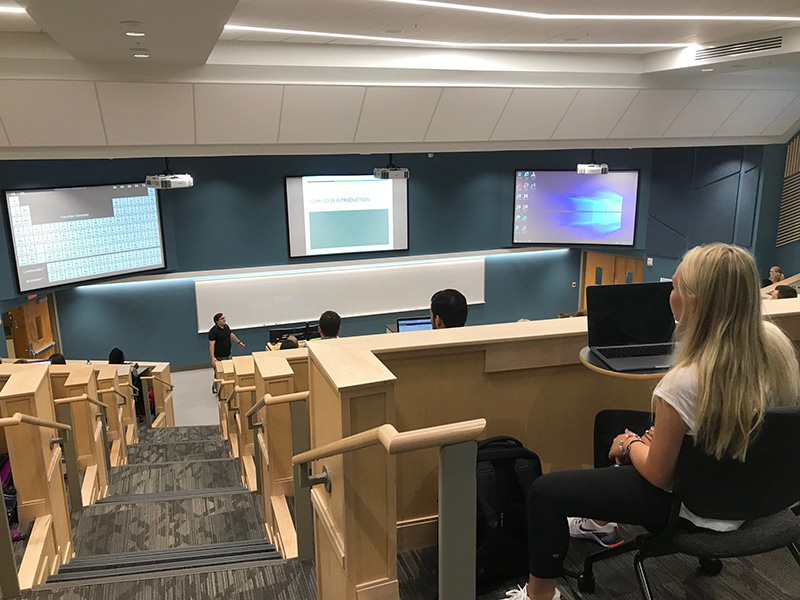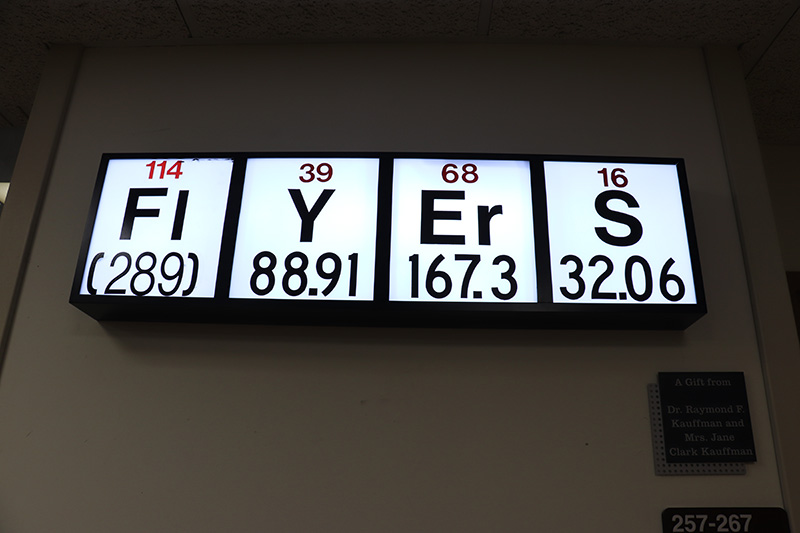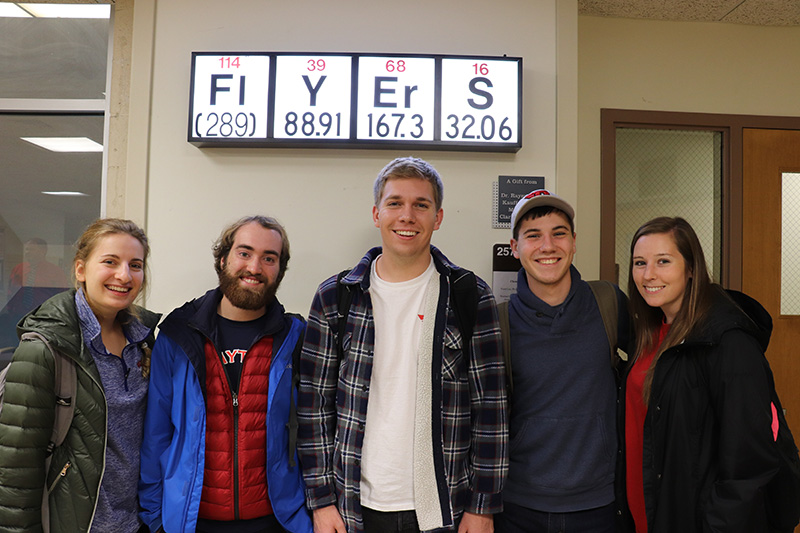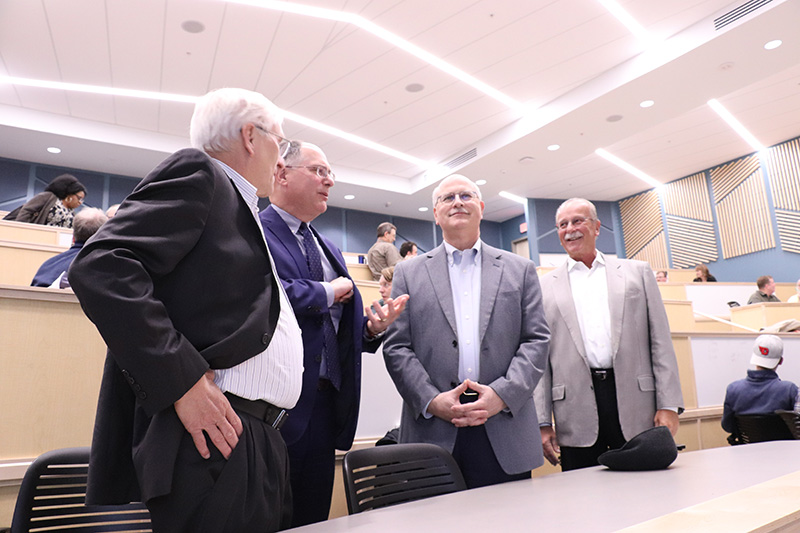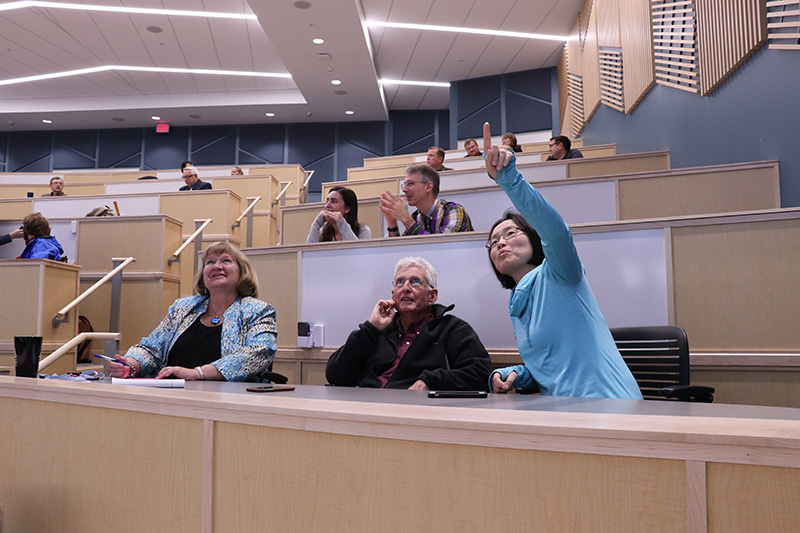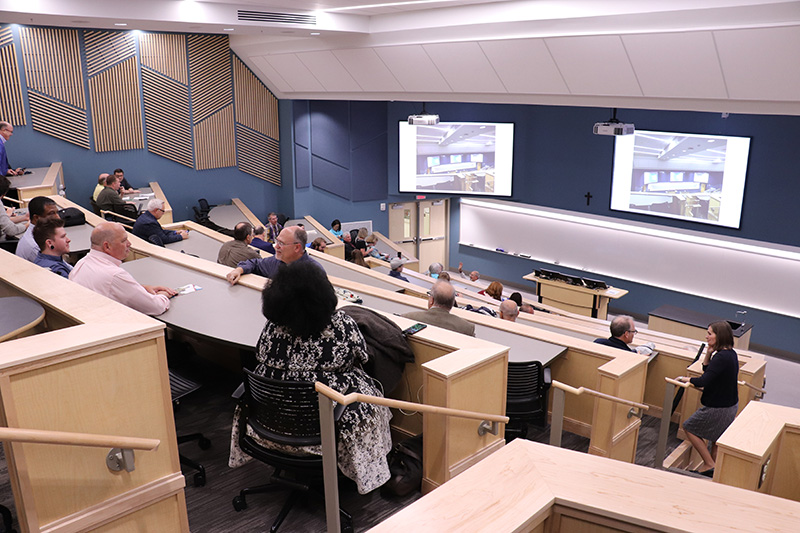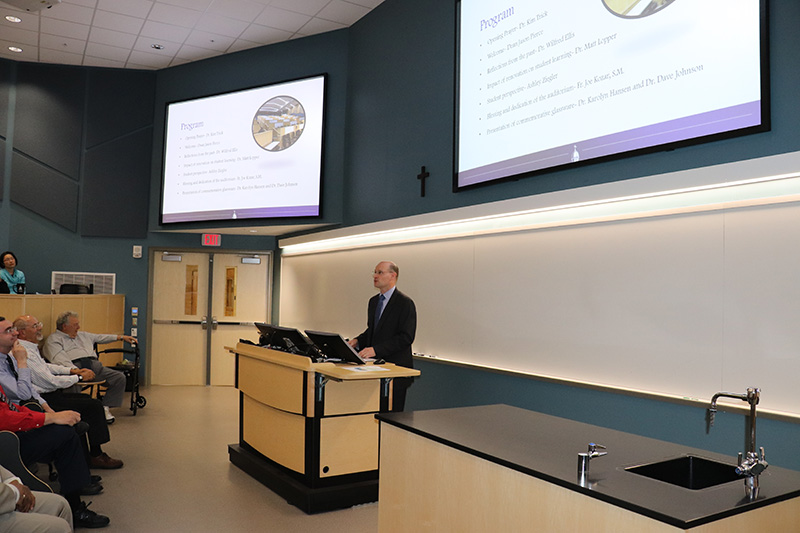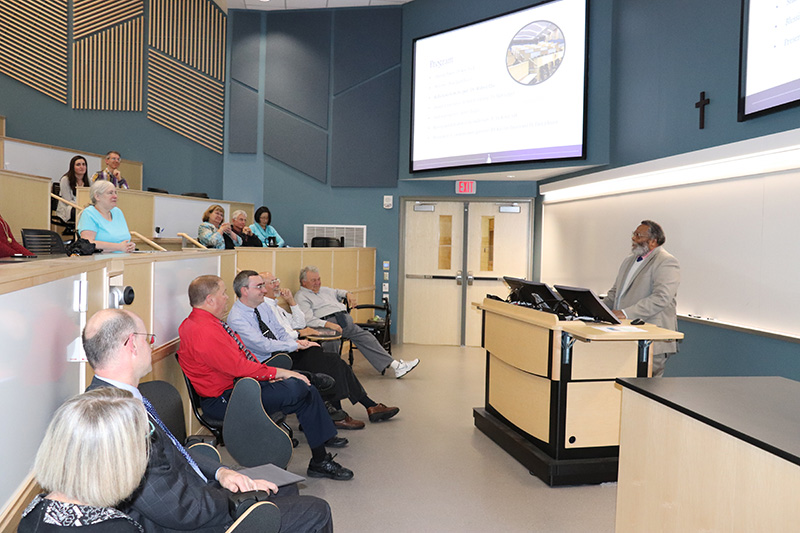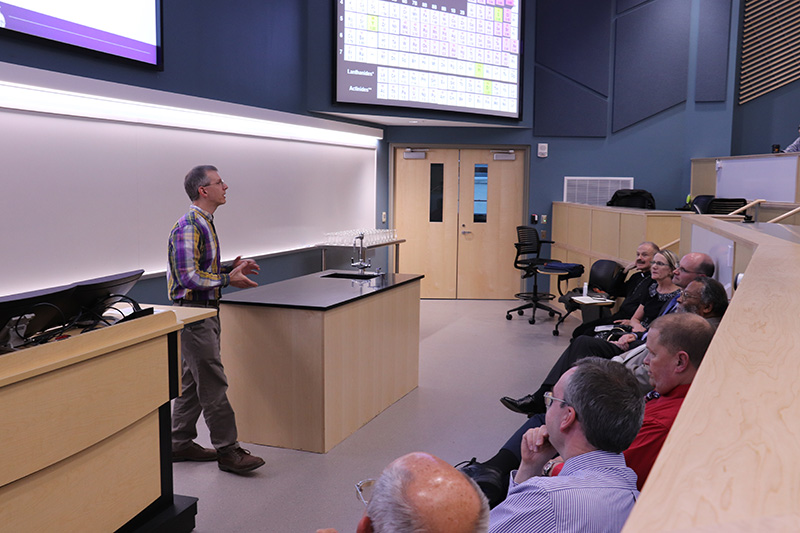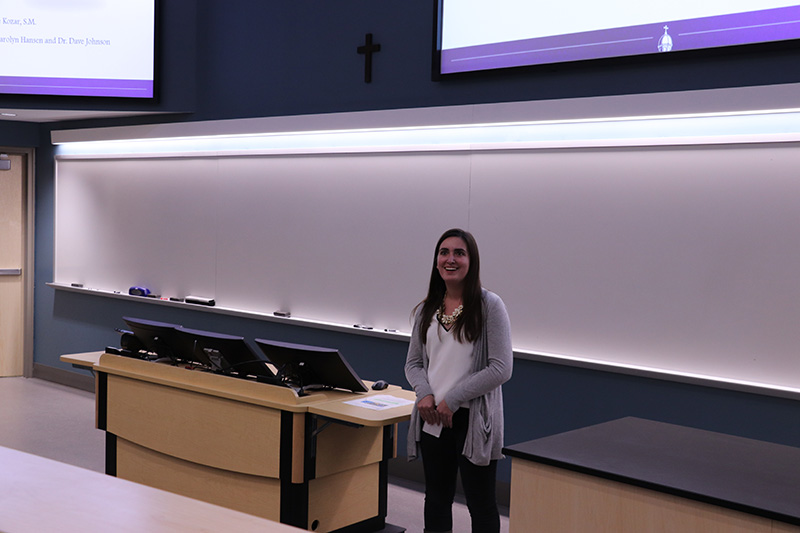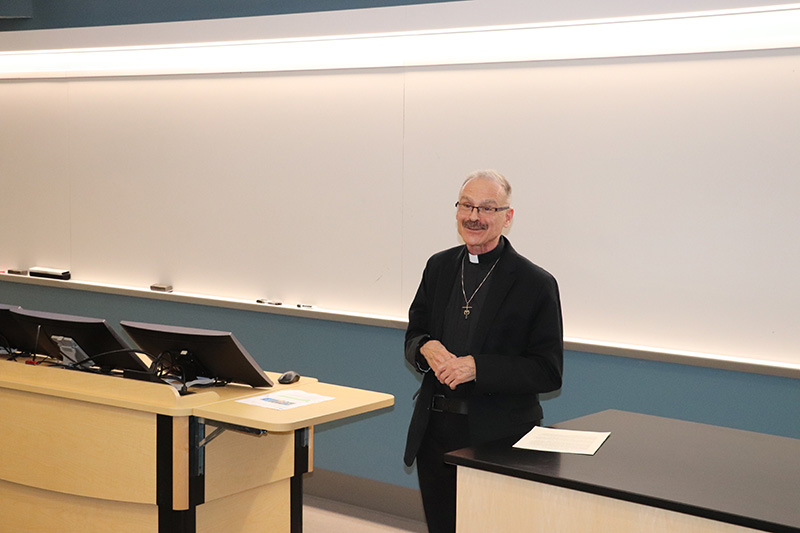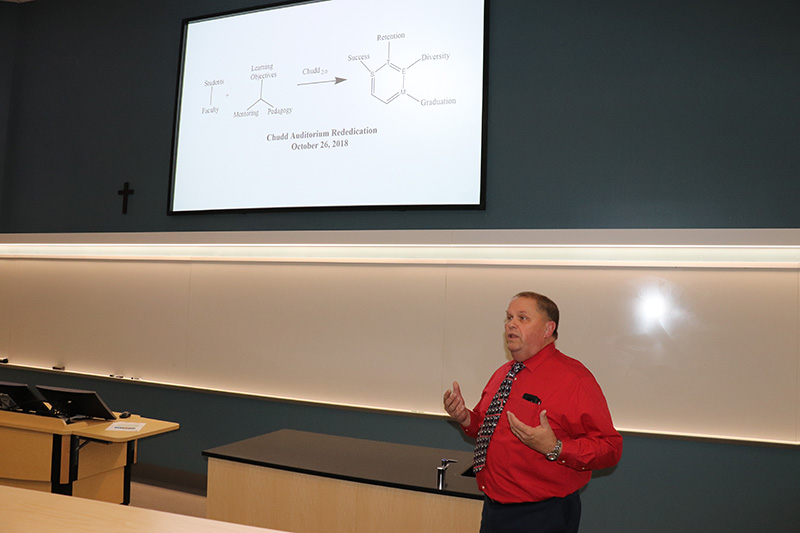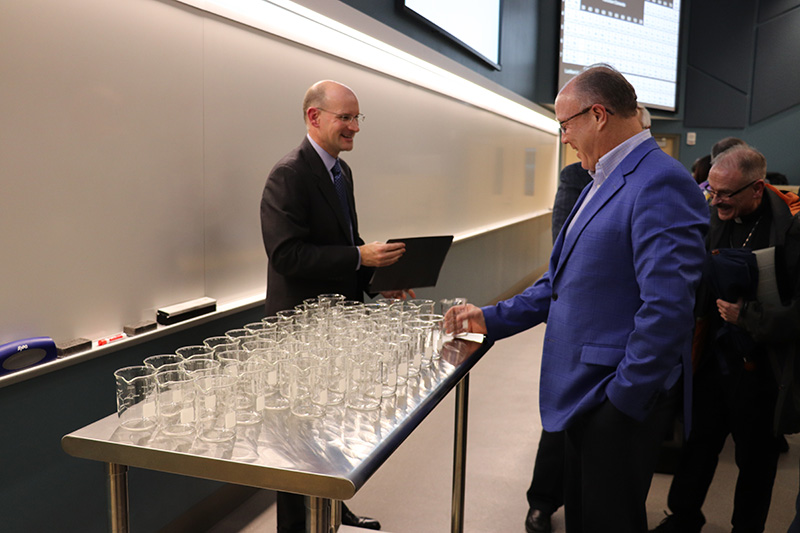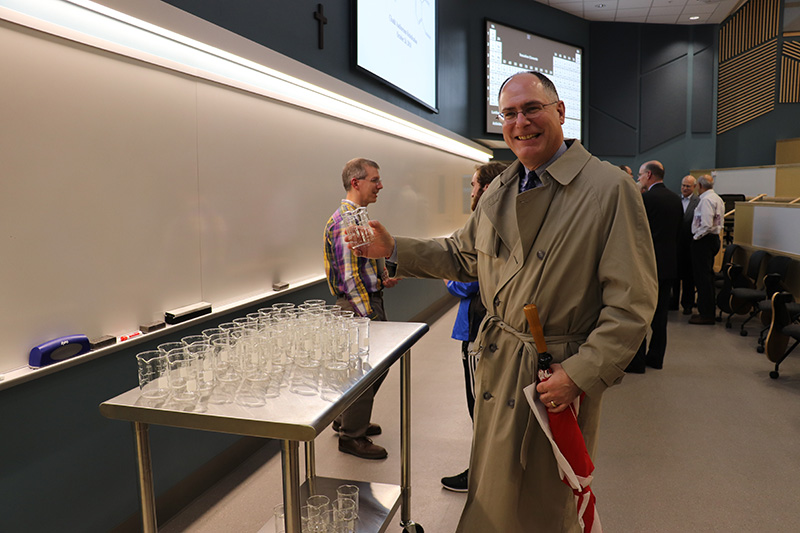College of Arts and Sciences Newsroom
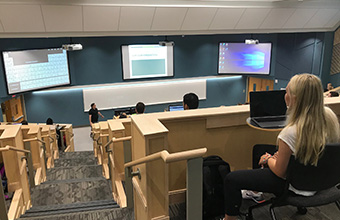
Chudd 2.0
Dedicated in 1958, the University of Dayton's Chudd Auditorium originally boasted air-conditioning, tiered seating and widescreen motion picture facilities.
Today, the newly renovated Science Center lecture hall — dubbed “Chudd 2.0” — offers state-of-the-art digital technology and collaborative work areas designed to promote innovative teaching and active learning.
The renovation coincides with an ongoing revision of the general chemistry curriculum that resulted in a 14 percent increase in student success from the 2015 to 2017 academic years.
“I believe with this combination of curricular reform and space renovation, the successes that the chemistry faculty and students are realizing will only continue,” said Jason Pierce, College of Arts and Sciences dean, speaking last month at the Chudd Auditorium dedication and blessing ceremony.
The summer 2018 auditorium renovation cost $1.6 million — the same amount as the 1956-1958 construction of Wohlleben Hall, Chudd Auditorium's home.
Auditorium capacity was reduced from 213 to 104 seats, with new four-person tables that encourage students to work in groups and allow instructors to move more freely around the room. Large whiteboards span the entire front of the classroom, with smaller ones located behind each table for students to solve problems together.
Three overhead screens can each display different images — such as diagrams, learning objectives and the periodic table — via “mission control” computers on the instructor’s podium. The podium itself can be lowered or raised electronically to give students in the front rows an unobstructed view of the whiteboard.
The iconic periodic table that once commanded the front right section of the room and used light bulbs to illuminate chemical elements has been replaced by an interactive digital version. Created by Matt Lopper ’98, associate professor of chemistry, the new digital version allows instructors to call up different color schemes to highlight characteristics and connections among the elements.
“This digital technology allows us to bring the periodic table to life and lets us interact with it in ways that could not be done with the 1980s technology that served us so well for so many years and was a beloved part of our Chudd Auditorium,” Lopper said. He wrote the computer code for the new table and demonstrated its capabilities during the dedication event.
Elements from the fondly recalled, mechanical periodic table still remain. The symbols for Flerovium, Yttrium, Erbium and Sulfur were fashioned into a custom lightbox that now hangs outside the auditorium entrance and reads: “FlYErS.”
The group tables allow students to spread out papers and talk with peers, said Ashley Ziegler, a junior pre-physical therapy major from Brookfield, Wisconsin. They also provide left-handed students like her with plenty of comfortable seats.
The whiteboards at each table allow instructors to see common misconceptions at a glance, without associating them with an individual student, said Kent Piepgrass, a chemistry lab instructor. “I think that has the potential to open up a freer dynamic within the classroom,” he said.
Piepgrass is part of a group of chemistry faculty who teach in Chudd Auditorium and meet weekly to share ideas about curriculum and optimizing use of the space.
Named in 1980 in honor of former Department of Chemistry Chair Bro. Cletus C. Chudd, the auditorium also hosted public forums, guest speakers and movie screenings during the last 60 years.
Dr. Wilfred Ellis ’75, an infectious disease specialist in Lima, Ohio, spoke during the dedication and recalled seeing the film Shaft in the auditorium.
“This was our social place here at UD,” said Ellis, a member of the College Advisory Council. “It was a nice movie theater, where we came and we spent a couple of bucks — because when you’re on financial aid, that’s all you have — and we enjoyed ourselves.”
Ellis also recalled his chemistry professors and classes in Chudd. “What I learned here in this classroom, I use today,” he said.
University President Eric F. Spina, Provost Paul Benson and representatives from John Poe Architects, Heapy Engineering and University Facilities Management and Planning attended the Oct. 26 dedication.
Guests each received a commemorative glass beaker etched with a chemical “equation” rendered by Department of Chemistry Chair Dave Johnson. It shows a bond of students and faculty added to learning objectives, mentoring and pedagogy — which, when catalyzed by Chudd 2.0, yield increased student success, retention, diversity and graduation rates.
“Chudd Auditorium 2.0 is our exemplar for a very careful and creative renovation for innovative teaching and active learning,” said Karolyn Hansen, Department of Biology chair. “Chudd 2.0 is our catalyst for change.”
- Dave Larsen, communication coordinator, College of Arts and Sciences

